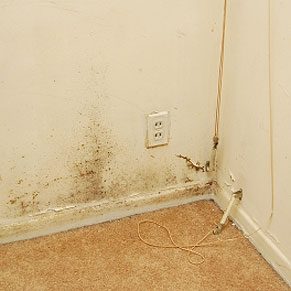Keep Your New Home Mould Free
We hear far too much about mould stricken homes. What can you do to set your new home apart from these sickly houses and prevent mould from taking over? Read what the experts have to say.

Mould poses serious health risks, especially to those with respiratory problems. Here’s how to tackle the problem to prevent mould from invading your home.
Species of Mould
Stachybotrys, which is the infamous black mould, and Aspergillus and Penicillium are microscopic fungi. They belong to the same group of organisms, which also includes mushrooms and yeasts.
In order for a mould to grow it must be provided with two key ingredients: moisture and nutrients.
Fungi are designed by nature to acclimatize quickly and effortlessly to their surroundings and grow rapidly, producing spores in the process. They can also produce mycelia , which is a loose network of the delicate filaments (hyphae) that form the body of a fungus, consisting of the feeding and reproducing hyphae.
Common Causes of Mould Growth
The most common cause of mould growth in today’s new home is operator error; water entering the home from the outside through the windows, the floor, the roof or the walls. Mould can also form from contaminated building materials being used during the construction process.
Water can only enter the building where there is a weak spot or a failure in the structure; where care has not been taken to properly seal the home; and where adequate ventilation has not been given to release the moisture.
Poor workmanship is generally the cause of water being allowed to saturate the wood used to build either the structure or frame of the home. Builders have figured out that if you keep wood dry, it simply does not promote the growth of fungi that we see as mould, mildew and wood rot.
Your builder will undoubtedly do every thing in his power to ensure that your home is properly sealed and ventilated.
Prevention
Mould prevention should begin during the construction of your home. Check for the following precautions:
- Building materials that are well protected and stored away from water. Mould happends from materials that have been stored unprotected and on the ground of the job site or in the suppliers’ yard. All wooden products such as trusses, joists, framing materials, and sheathing need to be covered and stored in a water and moisture free environment.
- The roof and sidewalls of the home also need to be protected against snow and rain until the roof, siding, windows, and doors are totally installed to seal out any water or moisture.
After the basic construction has been completed, then look for the following elements:
- A well-built older home remains mould free for 80-100 years primarily due to the quality of craftsmanship and the use of tarpaper and metal flashings above doors and windows. Carefully overlapped tarpaper prevent swater from ever reaching a wooden element of the homes framework.
- Metal flashings placed above doors and windows capture water gets behind the exterior finish and redirects it back to the outside of the home and down to the ground around the home.
Your builder should also be inspecting the home both during and at the completion of construction for mould growth. Your role as new home purchaser is to visit the job site regularly. If you recognize contaminated or suspect material, bring this to your builder’s attention immediately. You should also have a contractual arrangement with your builder for regular mold inspections both during and after the completion of all construction.

For great articles, tips, inspiration and more, visit www.casaGURU.com-The smartest way to find licensed and insured house experts-from home stagers to contractors to home Inspectors and realtors.
Get more home and gardening tips when sign up for our weekly newsletters.



